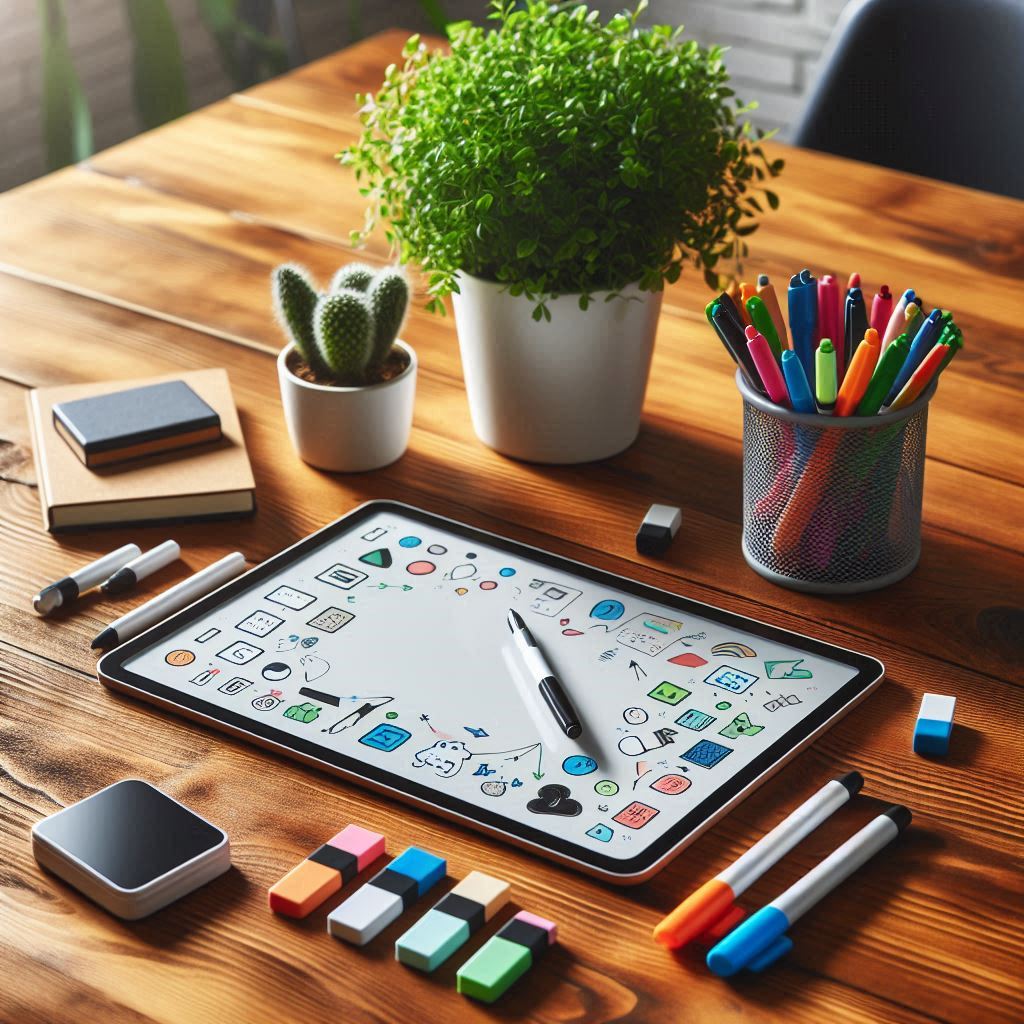Using a desktop whiteboard can transform your workspace, making it more organized and productive. Whether you’re brainstorming ideas, planning projects, or jotting down important notes, a desktop whiteboard serves as a versatile tool. In this blog, we’ll explore how to effectively use a desktop whiteboard, ensuring you maximize its potential.

What is a Desktop Whiteboard?
A desktop whiteboard is a small, portable writing surface that allows you to jot down notes, ideas, and reminders. Unlike traditional paper, it’s reusable—simply wipe it clean and start fresh. This eco-friendly option is perfect for anyone looking to reduce paper waste while enhancing productivity.
Choosing the Right Desktop Whiteboard
Before diving into how to use a desktop whiteboard, it’s crucial to select the right one for your needs. Consider the following factors:
- Size: Depending on your workspace, choose a size that fits comfortably on your desk without overwhelming it.
- Material: Look for high-quality materials that ensure smooth writing and easy erasing.
- Portability: If you plan to move it around frequently, opt for a lightweight model.
Once you’ve selected your whiteboard, you’re ready to put it to use!
If you want to read How to Use Samsung Galaxy Z Fold 6 Click Here
Setting Up Your Desktop Whiteboard
1. Find the Right Spot
Position your whiteboard where it’s easily visible and accessible. It should be within arm’s reach for quick note-taking and idea generation.
2. Gather Your Markers
Invest in quality dry-erase markers in various colors. Different colors can help categorize information or highlight important points. For instance:
- Red for urgent tasks
- Green for ideas
- Blue for reminders
3. Keep Erasers Handy
Ensure you have an eraser nearby. This makes it easy to clear the board when you need a fresh start or want to update your notes.
Effective Ways to Use Your Desktop Whiteboard
Brainstorming Ideas
One of the most effective uses of a desktop whiteboard is brainstorming. Here’s how to do it:
- Firstly, Write Freely: Start by jotting down any ideas that come to mind without filtering them.
- Secondly, Group Similar Ideas: Once you have a list, group similar ideas together. This helps in visualizing connections and themes.
- Thirdly, Prioritize: Use different colors or symbols to prioritize tasks or ideas that need immediate attention.
Planning Projects
A desktop whiteboard is excellent for project management. Follow these steps:
- Firstly, Outline Project Goals: Write down the main objectives of your project.
- Secondly, Break It Down: Divide the project into smaller tasks and list them on the board.
- Thirdly, Set Deadlines: Assign deadlines next to each task to keep yourself accountable.
Daily To-Do Lists
Keeping track of daily tasks can enhance productivity significantly:
- Firstly, Start Each Day with a List: Write down what you need to accomplish that day.
- Secondly, Check Off Completed Tasks: As you complete each task, check it off. This provides a sense of accomplishment and keeps you motivated.
Visual Reminders
Use your whiteboard for visual reminders:
- Quotes or Affirmations: Write motivational quotes or affirmations that inspire you throughout the day.
- Important Dates: Jot down birthdays, deadlines, or appointments so you never forget them.
Transitioning Between Tasks
As you work throughout your day, transition smoothly between tasks using your whiteboard:
- Firstly, Clear Old Tasks: Wipe away completed tasks but keep important notes visible.
- Secondly, Add New Tasks: Continuously update your board with new priorities as they arise.
- Thirdly, Reflect Weekly: At the end of each week, review what you’ve accomplished and adjust your goals for the next week.
Tips for Maintaining Your Desktop Whiteboard
To keep your whiteboard effective and long-lasting, consider these maintenance tips:
- Use Quality Markers: Low-quality markers can stain the board and make erasing difficult.
- Clean Regularly: Wipe down your whiteboard with a soft cloth regularly to prevent ghosting (when old markings remain).
- Store Properly: When not in use, store markers horizontally to prevent drying out.
Enhancing Collaboration
If you’re working in a team setting, a desktop whiteboard can facilitate collaboration:
- Share Ideas Openly: Encourage team members to contribute their ideas directly to the board during meetings.
- Visualize Solutions Together: Use the board as a collaborative space where everyone can see and discuss solutions in real time.
Conclusion
A desktop whiteboard is more than just a writing surface; it’s a powerful tool that can enhance productivity and creativity in your workspace.
By choosing the right board, setting it up effectively, and using it for brainstorming, planning, and reminders, you can transform how you organize thoughts and tasks.
Remember to maintain your board regularly and encourage collaboration if you’re working with others. With these strategies in mind, you’ll be well on your way to making the most out of your desktop whiteboard!
